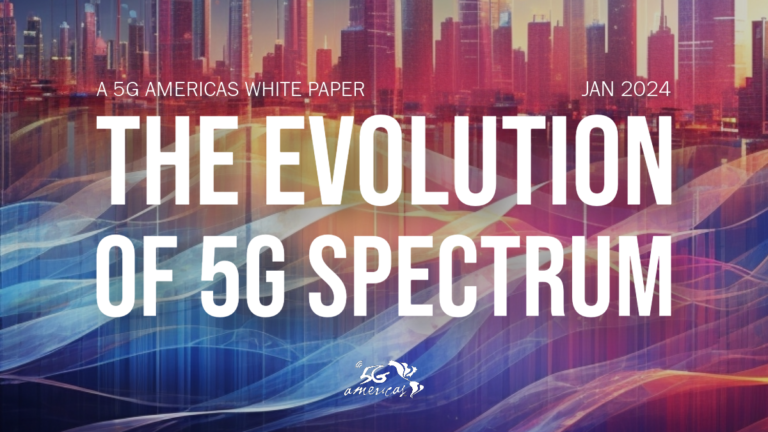Developing a comprehensive roadmap for new commercial spectrum is necessary to ensure the successful deployment of future mobile networks. Balancing licensed and unlicensed spectrum is critical for the mobile industry. The upper midband spectrum, ranging from 7.125 to 15.35 GHz, is key to leveraging existing infrastructure and increasing capacity. 5G Americas is focused on identifying new spectrum critical to the U.S. National Spectrum Strategy pipeline and ensuring rapid commercialization and sustained technology leadership.
The International Telecommunication Union (ITU)’s International Mobile Telecommunications (IMT)-2030 codified various usage scenarios that form the basis of spectrum needs. These scenarios highlight the need for high data rates and wide area coverage for applications such as immersive experiences, next-generation medical monitoring, human-machine interfaces, and joint communications and sensing (JCAS).
Key topics covered in this latest 5G America whitepaper include:
- US frequency band position compared to other countries
- Expected spectrum needs from 2027 to 2030
- Desired spectral characteristics of target band
- Technologies that enable the use of cellular systems in new bands
- Current and future uses of mmWave
- Sub-THz spectrum for new 6G use cases
- ITU WRC-23 decision
“5G Americas supports the spectrum range from 7.125 to 15.35 GHz, especially below 10 GHz, for licensed mobile operations, considering the balance between capacity and coverage. To open bands in this range, Relocation considerations and shared strategies are needed. In addition, mmWave bands can be used for deployment in dense locations such as urban centers, transportation hubs, downtown areas, and entertainment centers, as well as for fixed wireless access deployments. “It’s very important. The sub-THz band provides much higher bandwidth and may be suitable for special use cases,” said Workgroup Co-Leader and Principal Engineer and Manager at Qualcomm Technologies. says Aleksandar Damjanovic.


